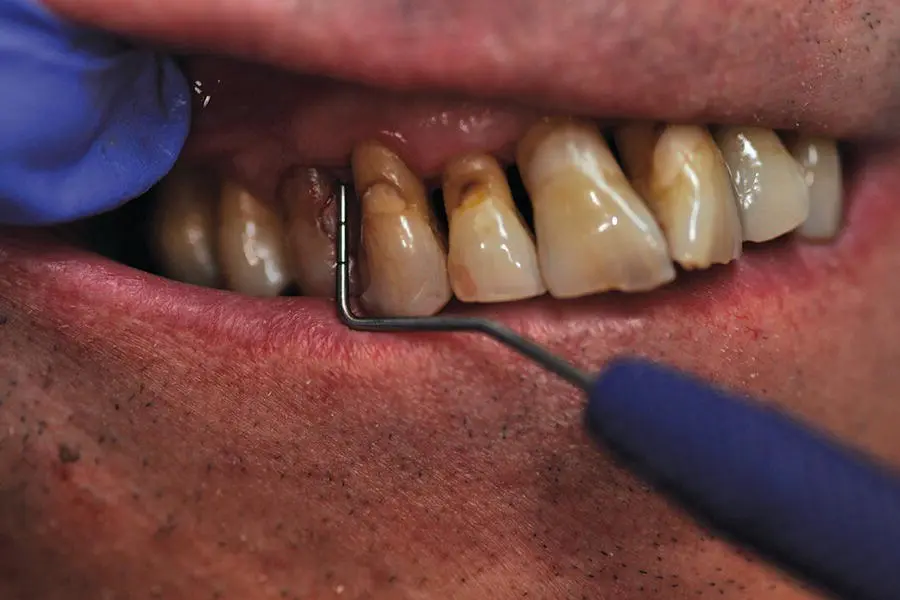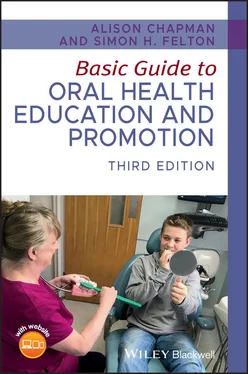A growing body of research also suggests that there is an association between periodontitis and certain systemic (body) conditions, such as adverse pregnancy outcomes and type 2 diabetes [2].
Studies have also shown a link between periodontitis and coronary heart disease, and people with heart disease have an increased risk of periodontal disease. Acute coronary syndrome, high blood pressure (hypertension), and high cholesterol have also been associated with periodontal disease [3]. The more severe the periodontitis, the greater the risk of heart problems.
Primary causes of periodontitis
Periodontitis is often, but not always, a progression of gingivitis, and is primarily caused by the enzymes and toxins of mature plaque bacteria, which gradually break down the tissues of the periodontium in a susceptible host [4].
For most patients, gingivitis does not progress to periodontitis, but 10–15% of patients are susceptible to periodontitis [3]. The onset of periodontitis in these patients is thought to be due to a genetic abnormality, which causes a change in the behaviour of cytokines (substances which regulate the movement of immune system cells), and subsequent destruction of bone. This genetic basis explains why periodontitis frequently affects members of the same family. Current thinking is that with periodontal disease, 20% of tissue damage is due to the direct effects of plaque by‐products on tissues and 80% due to indirect effects, i.e. host destruction triggered by the body’s own white blood cells [5].
Secondary risk factors in the development of periodontitis
Secondary factors are important in the development of periodontitis, and include:
Smoking – the most important risk factor. Periodontal disease is more common in smokers than non‐smokers [2]. Treatment response in smokers is also poorer than non‐smokers. Smoking is thought to:Reduce blood flow in the gingivae.Reduce white blood cell mobility and function.Impair healing.Increase inflammatory substances (cytokines).
Poor oral hygiene – failure to clean effectively, leading to plaque accumulation.
Age – older people are more likely to have periodontitis, due to being exposed to plaque for a longer period than younger patients, and older people do not heal as easily.
Plaque retention factors – poorly finished/worn fillings, dentures, crowns, bridges, partially erupted/impacted teeth, and supragingival/subgingival calculus (see Chapter 2).
Crowding and malocclusion – one of the reasons for carrying out orthodontic treatment in childhood is to improve access to tooth surfaces and the ability to clean them, and prevent periodontal disease from occurring later. Bone loss associated with malocclusion is usually localised and not associated with poor oral hygiene.
Carious cavities – plaque‐retentive ledges.
High frenulum insertion – usually found buccally on lower anteriors. The frenulum is a fold of mucous membrane, which limits the movement of the lower lip. If the insertion of the membrane is high on the gingivae, it can prevent effective oral hygiene and cause gingival recession.
Systemic conditions (see Chapter 8) – for example, patients with diabetes, Down’s syndrome, immunological disorders, and those who experience hormonal changes (e.g. during pregnancy and puberty).
Features of periodontitis
Features of periodontitis include:
Often occurs in middle age.
Usually progresses slowly.
Can have unpredictable bursts of activity (active phases may need clinical intervention).
Can result from the progression of gingivitis, but not always – many people have gingivitis for years but do not develop periodontitis.
Patients can present with no obvious visual clinical signs (in some cases, the tissues can look quite healthy). Only pocket probing and radiographs will identify the loss of supporting structures.
Dental professionals in the UK have a duty of care to diagnose the disease in its early stages.
In the early stages of the disease, the dental professional will notice:
A variable degree of gingivitis. Some patients still have gingivitis, others not.
Bleeding on deep probing.
The presence of subgingival calculus.
Gingival recession.
Bone loss – may be horizontal or vertical (and only apparent on X‐rays).
In the advanced stage of the disease, the dental professional will notice:
Periodontal abscess (see Chapter 8).
Drifting and/or mobility of teeth due to loss of attachment ( Figure 4.2). Fifty per cent of UK dentate adults over 16 years old have more than 4‐mm attachment loss [1]. It is characterised by true pocketing ( Figures 4.3and 4.4), which may be either:Suprabony (horizontal) – when the base of the pocket is above the crest of the alveolar bone.Infrabony (vertical) – when the base of the pocket is below the crest of alveolar bone.

Figure 4.2 Drifting.
Source: Professor Nicola West, Bristol University. Reproduced with permission of Professor Nicola West.

Figure 4.3 True pocketing, with probe inserted.
Source: Alison Chapman.

Figure 4.4 True pocketing.
Source: Alison Chapman.
Symptoms of periodontitis
In the early stages of periodontitis, the patient may complain of:
Recession – gums recede, and teeth may be hot and cold sensitive.
Halitosis or a bad taste due to accumulation of bacteria in pockets and pus formation.
In the advanced stage of periodontitis, the patient may complain of:
Drifting/mobility – loose/moving teeth.
Pain (sometimes – from periodontal abscess).
Pus oozing from pockets.
Treatment and management of periodontitis includes the following:
Encouragement and help to stop smoking (see Chapter 13).
Regular maintenance and monitoring by:Diagnosing and monitoring with pocket charting, bleeding indices (see Chapter 29), and removal of plaque retentive factors.Effective regular plaque removal using manual or powered brush, and interdental brushes, plus (in severe cases) chlorhexidine mouthwash.Toothpaste and mouthwashes containing fluoride are antibacterials and interfere with bacterial metabolism, reducing the number of bacteria present in the mouth.Scaling, root surface debridement with ultrasonic scalers and hand scalers.Air polishing – use of low abrasive agents, such as glycine or erythritol on the root surface to remove subgingival bacteria and reduce recolonisation.Laser treatment in which light and a photosensitiser are used to destroy bacteria.
Antibiotics – systemic or local.
Chlorhexidine‐impregnated chip placed in pocket.
Surgery – re‐contouring of gingivae and removal of pockets.
Remember!No periodontal treatment carried out by the dentist or hygienist will work if the patient does not maintain their oral hygiene.
Classification of Periodontal diseases ( Figure 4.5a,b)
Periodontal diseases are classified by the British Society of Periodontology (BSP) by the:
Читать дальше















